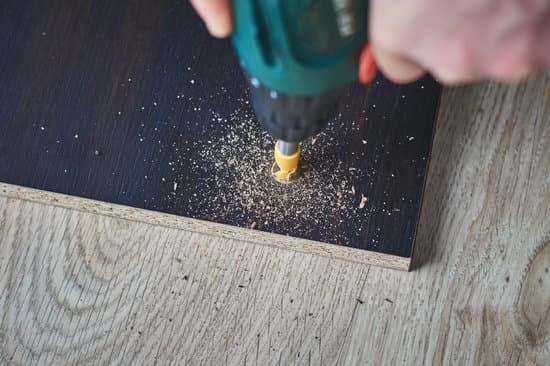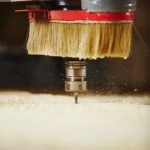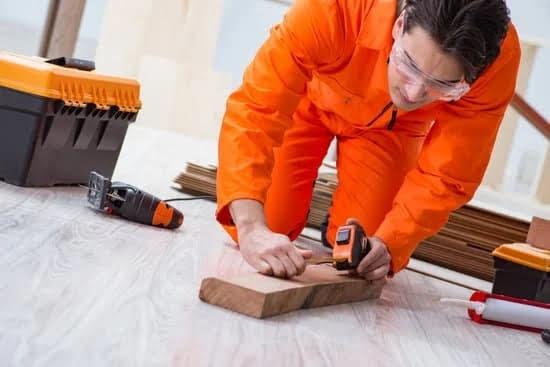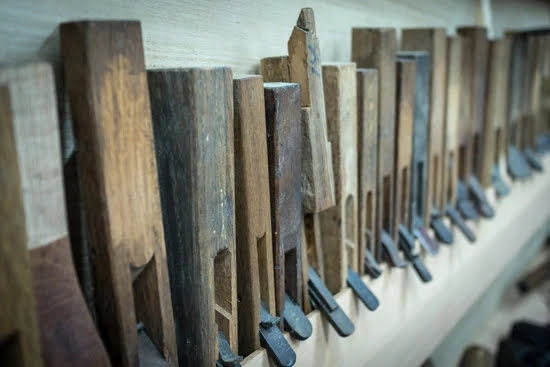Intarsia woodworking is a unique and intricate form of woodworking that involves using different types and colors of wood to create a stunning mosaic-like design. In this article, we will explore the art of intarsia woodworking, its rich history, and why it has become popular among craftsmen and hobbyists alike.
Dating back to ancient times, intarsia woodworking originated in ancient Egypt and was later perfected by Italian craftsmen during the Renaissance period. The word “intarsia” itself comes from the Latin word “interserere,” meaning to insert or inlay. This technique involves carefully cutting out various shapes from different types of wood and fitting them together like a puzzle to create a beautiful picture or pattern.
The appeal of intarsia woodworking lies in its ability to transform ordinary pieces of wood into works of art. With this technique, artists can bring depth, texture, and lifelike images to their creations. Whether it’s a vibrant wildlife scene or an intricate floral design, intarsia woodworking allows for endless creative possibilities.
Throughout this article, we will delve into the steps involved in creating an intarsia masterpiece – from choosing the right tools and materials to assembling and finishing your project with finesse. So if you’re looking to add a new dimension to your woodworking skills or simply seeking an engaging hobby, join us on this artistic journey as we explore the world of intarsia woodworking.
Tools and Materials Needed for Intarsia Woodworking
Intarsia woodworking requires a specific set of tools and materials to ensure successful and precise craftsmanship. Here is a list of essential tools you will need for your intarsia projects:
- Scroll saw: This is the most crucial tool for intarsia woodworking. It allows you to make intricate cuts and shape the wooden pieces accurately.
- Dremel or rotary tool: A Dremel or rotary tool comes in handy for sanding, shaping, and detailing the wood pieces. It helps achieve smooth edges and add fine details to your project.
- Chisels and gouges: These hand tools are used to create precise cuts on the wood, especially when working with larger pieces or removing excess material.
- Sandpaper and sanding blocks: The process of intarsia involves fitting different wooden pieces together, so sandpaper and sanding blocks are essential for smoothing surfaces, blending joints, and achieving a seamless final result.
As for materials, it is important to choose the right type of wood for your intarsia project. Some recommended woods for intarsia include:
- Hardwoods: Hardwoods like walnut, cherry, oak, maple, mahogany, and birch are popular choices due to their durability and attractive grain patterns.
- Softwoods: Softwoods such as pine or cedar can also be used but may require more filling or staining due to their porous nature.
Additionally, it is crucial to take safety precautions when working with wood and tools. Always wear protective gear such as safety glasses, earplugs (if necessary), and a dust mask to protect yourself from flying debris or harmful sawdust particles.
Choosing a Design for Intarsia Woodworking
When embarking on an intarsia woodworking project, one of the most important decisions you will make is choosing a design. The design sets the tone and aesthetic of your project, so it’s crucial to select one that aligns with your skill level and personal preferences. In this section, we will provide some tips on selecting a suitable design, finding inspiration, and preparing a pattern or template for your intarsia project.
Tips on selecting a suitable design for your skill level
Before starting an intarsia woodworking project, it’s essential to consider your current skill level. Beginners may want to start with simpler designs that have fewer intricate details and fewer wood pieces to work with. As you gain more experience and confidence in your abilities, you can gradually take on more complex designs.
It’s also helpful to choose a design that matches your interest or passion. Whether it’s animals, landscapes, or geometric patterns, selecting a subject matter that excites you will make the process more enjoyable and fulfilling.
How to find inspiration for your intarsia project
Finding inspiration for your intarsia woodworking project can come from various sources. Look around the natural world – observe the shapes, colors, and textures of plants, animals, and scenery. You can also draw ideas from books and magazines dedicated to woodworking or browse online platforms such as Pinterest or Instagram for images of completed intarsia projects.
Attending woodworking exhibitions or visiting galleries featuring wood art can be another great way to find inspiration and see what other artists have created with intarsia techniques. Don’t be afraid to explore different styles and genres for fresh ideas.
Importance of preparing a pattern or template
Once you have selected a design for your intarsia project, it’s important to prepare a pattern or template before getting started. A pattern or template acts as a guide for cutting and shaping the wood pieces, ensuring accuracy and consistency throughout the project.
There are several ways to create a pattern or template. You can sketch it by hand on paper, transfer a design onto graph paper using scaling techniques, or use computer software to generate a digital template. Whichever method you choose, make sure that the dimensions are accurate and that each wood piece is clearly labeled on the template.
Taking the time to carefully prepare a pattern or template will help you stay organized and avoid mistakes during the cutting and assembly stages of your intarsia woodworking project. It’s an essential step that contributes to the overall success of your final piece.
By considering your skill level, finding inspiration, and creating a pattern or template, you’ll be well-equipped to choose a design for your intarsia woodworking project. This thoughtful process will lay a strong foundation for creating a beautiful and meaningful piece of art through intarsia woodworking.
Preparing Wood for Intarsia Woodworking
When embarking on an intarsia woodworking project, the process begins with properly preparing the wood. This section will guide you through the necessary steps to ensure your wood is ready for intarsia.
Steps to Properly Prepare the Wood
The first step in preparing wood for intarsia is selecting the right type of wood. It is essential to choose a wood that is suitable for intarsia projects, such as hardwoods like oak, walnut, cherry, or maple. Softwoods like pine can also be used but may require more care during shaping and cutting due to their softer texture.
Once you have chosen your wood, it is important to ensure it is free from any defects or flaws. Check the wood closely for knots, cracks, or warps that could affect its integrity and stability. Use a sanding block or sandpaper to smooth any rough areas or imperfections.
Next, consider the thickness of your chosen wood. For most intarsia projects, a thickness of around 1/2 inch (12mm) is ideal. If your wood is thicker than this, you may need to plane it down using a planer or hand plane. On the other hand, if your wood is thinner than desired, you can laminate multiple layers together using glue and clamps.
Techniques for Cutting and Shaping Wood
To create the intricate shapes required in intarsia woodworking, you will need to utilize various cutting techniques. One common method is using a scroll saw equipped with a fine-toothed blade that allows for precise cuts and intricate detailing. It’s crucial to practice control and patience when cutting along curved lines.
When shaping your wood pieces, many intarsia enthusiasts prefer to use sanding drums or files attached to rotary tools like a Dremel. These tools allow for more detailed shaping and contouring. Remember to take your time and work slowly, as it is easier to remove material than to add it back.
Tips for Selecting the Right Wood Grain
The wood grain plays an important role in the overall aesthetic of an intarsia project. Consider how the grain pattern and direction can enhance or detract from the design you have chosen. Experiment by cutting small test pieces from different areas of your wood to see which grain patterns you prefer.
Additionally, pay attention to the color variations in your wood. Some pieces may feature natural variations in tone that can add depth and dimension to your intarsia project. Take note of these variations when selecting which parts of the wood to use for specific elements of your design.
By following these steps and techniques for preparing wood for intarsia woodworking, you will set yourself up for success in creating beautiful and intricate pieces. The next section will guide you through the step-by-step process of creating your intarsia woodworking masterpiece.
Creating Intarsia Woodworking Pieces
Intarsia woodworking involves the meticulous process of cutting and shaping different pieces of wood to create a stunning design. This section will provide you with a step-by-step guide on how to create your own intarsia masterpiece.
- Start by selecting the design for your intarsia project. It is important to choose a design that matches your skill level and fits within the dimensions of your wood piece. You can find inspiration from various sources such as nature, animals, or geometric patterns. Once you have chosen a design, prepare a pattern or template that will serve as your guide throughout the project.
- Begin by cutting out the main shape of the design from your chosen wood. This can be done using a scroll saw or band saw. Take your time and make precise cuts to ensure accuracy.
- Next, cut out the individual pieces that make up the design using smaller pieces of wood in different colors and grains. It is crucial to pay attention to detail and ensure that each piece fits perfectly within the overall design.
- Use sandpaper or a file to smooth out any rough edges on each piece of wood. This will help achieve a seamless finish when all the pieces are assembled together.
- To give depth and dimension to your intarsia project, carefully shape each piece using carving tools or sandpaper. This will add texture and bring your design to life.
- Once all the individual pieces are prepared, it is time to assemble them together like a puzzle. Fit each piece into its designated spot on the main shape and make any necessary adjustments until everything fits snugly together.
- When you are satisfied with how everything fits, it’s time to glue the pieces in place. Apply woodworking glue evenly on the back of each piece before positioning them back onto the main shape. Press firmly for a secure bond and wipe off any excess glue that may have seeped out.
- Allow the glue to fully dry before moving on to the final step of sanding and smoothing the completed project. Use fine-grit sandpaper to remove any rough spots, ensuring a smooth and polished finish.
By following this step-by-step guide, you will be able to create your own stunning intarsia woodworking piece. Remember to take your time and pay attention to detail throughout the process for the best results. Happy woodworking.
Assembling and Gluing the Intarsia Woodworking Pieces
Once you have cut and shaped all the individual wood pieces for your intarsia project, the next step is to assemble them together to create a cohesive design. This section will guide you through the techniques for fitting the wood pieces together, methods for gluing and joining them securely, and advice on smoothing and sanding the completed project.
Before you begin assembling your intarsia woodworking piece, it’s important to ensure that all your wood pieces fit together properly. Take the time to test-fit each piece before applying any glue. This will help you identify any areas that may need adjustments or minor alterations. You can use a small mallet or sandpaper to make any necessary modifications.
When it comes to gluing the pieces together, there are a few methods you can choose from. Some woodworkers prefer using wood glue, while others opt for cyanoacrylate (CA) glue. Both options have their advantages and it ultimately depends on personal preference. Regardless of which type of glue you choose, apply a thin layer evenly on both mating surfaces of the wood pieces. Then press them firmly together and wipe off any excess glue that may squeeze out.
Once your intarsia project is glued together, allow ample time for the glue to dry completely before moving onto the next steps. The drying time will vary depending on factors such as temperature and humidity, so refer to the manufacturer’s instructions for specific guidelines.
After the glue has dried, you can proceed with smoothing and sanding your completed intarsia woodworking piece. This step is crucial in achieving a polished final result. Start by using a sanding block or sandpaper with a fine grit to smooth out any rough edges or imperfections left behind from cutting and shaping.
Finally, gradually work your way up through finer grits of sandpaper until you achieve a smooth surface on all parts of your piece. This will help bring out the natural grain and beauty of the wood. You can finish off by using a soft cloth to wipe away any dust or debris from sanding.
Assembling and gluing the intarsia woodworking pieces is a critical step in creating a beautiful and durable project. Take your time during this process and ensure each piece fits together snugly before applying glue. With patience and attention to detail, you’ll be on your way to completing a stunning intarsia masterpiece.
| Gluing Methods | Advantages |
|---|---|
| Wood Glue | – Provides strong bonding – Ideal for porous woods. – Allows more time for adjustments. |
| Cyanoacrylate (CA) Glue | – Quick drying time – Bonds well with different wood types. – Minimal clamping required. |
Finishing and Detailing Your Intarsia Woodworking Piece
Once you have completed the assembly and gluing of your intarsia woodworking piece, it’s time to move on to the finishing and detailing stage. This section will provide you with guidance on how to enhance your project and make it truly stand out.
One of the first considerations in finishing your intarsia piece is the choice of materials. There are several options available, including stains, varnishes, or paints. Stains can bring out the natural beauty of the wood grain while varnishes provide a protective layer that can make your piece more durable. If you prefer to add color to your project, paints offer endless possibilities for creativity.
Before applying any finish, ensure that your project is clean and free from dust or debris. You may need to lightly sand any rough edges or imperfections before proceeding. Once you’re ready, carefully apply the chosen finish, following the manufacturer’s instructions for best results.
When adding details to your intarsia woodworking piece, think about small enhancements that can bring it to life. Consider using contrasting woods or adding inlays for added visual interest. It’s important not to overwhelm the overall design with too many intricate details, as this can take away from the beauty of the intarsia work itself.
An option for adding small details is woodburning or pyrography. This technique involves using a heated tool to burn designs into the wood surface. It can be used to create intricate patterns or add texture and shading to certain areas of your intarsia piece.
Lastly, don’t forget about small embellishments that can elevate your project even further. Adding metal accents such as brass or copper can provide an elegant touch. You could also consider incorporating gemstones or other materials that align with your vision for the finished piece.
Troubleshooting Common Issues in Intarsia Woodworking
Woodworking, including intarsia woodworking, is a craft that requires skill, practice, and patience. Even experienced woodworkers encounter challenges along the way. In this section, we will discuss some common issues that you may come across during your intarsia project and offer solutions to help you overcome them.
One of the most common mistakes beginners make in intarsia woodworking is not selecting the right wood for their project. The type and quality of wood can greatly affect the outcome of your piece. It is crucial to consider factors such as grain pattern, color variations, and hardness when choosing your wood.
If you find that the wood you are using is too soft or prone to splintering, consider switching to a harder variety. Additionally, be mindful of potential warping or bowing issues with certain woods and take preventive measures such as proper storage and preparation.
Another challenge often faced in intarsia woodworking is achieving tight-fitting joints between the wooden pieces. Gaps between the pieces can compromise the overall look and stability of your project. To ensure a precise fit, check that your saw blade is properly aligned and choose the appropriate size blades for different cuts. Use clamps or tape to hold the pieces together tightly before gluing them.
We all make mistakes from time to time, but there’s no need to panic if you find imperfections in your final piece. Many minor flaws can be fixed with sanding or carving tools. For gaps or unevenness in joints, fill them with wood filler or epoxy resin designed for woodworking projects. Take your time with these corrections, making sure to blend them seamlessly into the surrounding areas.
By knowing how to troubleshoot common issues in intarsia woodworking, you can navigate through challenges and create high-quality pieces that truly showcase your skills. Remember that each mistake is an opportunity to learn and grow as a woodworker. With practice and persistence, you’ll be able to overcome obstacles and continue honing your craft.
Showcasing Your Intarsia Woodworking Masterpiece
Once you have completed your intarsia woodworking project, you will undoubtedly want to display and showcase your masterpiece. Here are some ideas for showcasing and presenting your finished project:
- Displaying Options: There are several options for displaying your intarsia woodworking piece. You can use a shadow box frame to protect and highlight your work while hanging it on a wall. Another option is to mount the piece on a wooden plaque or base to create a freestanding sculpture-like display. Additionally, you can incorporate your intarsia piece into furniture, such as a coffee table or shelf, to seamlessly blend it with your home decor.
- Photographing and Sharing: Take high-quality photographs of your intarsia woodworking piece to capture its true beauty. Use natural lighting or a lightbox setup to ensure the colors and details are accurately represented in the photos. Once you have taken captivating images of your work, consider sharing them on social media platforms or online communities dedicated to woodworking. This allows you to connect with other artists and enthusiasts, receive feedback, and inspire others with your creations.
- Celebrating Achievements: Completing an intarsia woodworking project is an accomplishment worth celebrating. Consider entering local woodworking competitions or submitting your work for exhibitions at galleries or craft shows in order to gain recognition for your skills. These events provide opportunities for networking with other artisans, receiving valuable critiques, and potentially even selling your pieces if that is something you are interested in pursuing.
| Options | Details |
|---|---|
| Shadow Box Frame | Protects and highlights the piece while hanging on a wall. |
| Wooden Plaque or Base | Creates a freestanding sculpture-like display. |
| Incorporate into Furniture | Blends the intarsia piece with your home decor. |
| Photographing and Sharing | Capture high-quality images and share them on social media or online woodworking communities. |
| Entering Competitions/Exhibitions | Gain recognition, network with other artisans, and potentially sell your work. |
Remember, showcasing your intarsia woodworking masterpiece allows you to share your achievements with others and inspire fellow woodworkers. It also provides an opportunity for personal satisfaction and growth as you continue to explore and embrace the art of intarsia woodworking.
Conclusion
In conclusion, intarsia woodworking is a beautiful and rewarding art form that allows individuals to express their creativity while working with wood. Throughout this article, we have explored the various aspects of intarsia woodworking, from understanding what it is and the tools and materials needed, to choosing a design, preparing the wood, creating the pieces, assembling and gluing them together, finishing and detailing the project, troubleshooting common issues, and finally showcasing the masterpiece.
Intarsia woodworking may seem daunting at first, but with practice and patience, anyone can master this craft. The key is to start with simple designs that match your skill level and gradually work towards more intricate projects as you gain confidence. Don’t be afraid to seek inspiration from nature or other artistic forms to create unique designs that reflect your personal style.
One of the most satisfying aspects of intarsia woodworking is seeing how individual wood pieces come together to form a cohesive and visually stunning whole. It requires precision cutting, shaping, and fitting of pieces to achieve depth and dimension in your final project. With attention to detail and proper gluing techniques, you can create long-lasting intarsia pieces that will be cherished for years to come.
Don’t forget to explore different finishing options like stains, varnishes, or paints to enhance the beauty of your masterpiece. These final touches can truly transform a piece by highlighting details or adding depth. Whether you choose a natural finish or opt for vibrant colors, make sure it enhances the overall design rather than distracts from it.
In conclusion, embracing the art of intarsia woodworking offers an opportunity for self-expression and satisfaction like no other. By following the steps outlined in this article and incorporating your own creative flair into each piece you make, you can truly create something special. So go ahead – pick up those tools and let your imagination run wild as you embark on your journey in the world of intarsia woodworking.

Hi everyone! I’m a woodworker and blogger, and this is my woodworking blog. In my blog, I share tips and tricks for woodworkers of all skill levels, as well as project ideas that you can try yourself.





